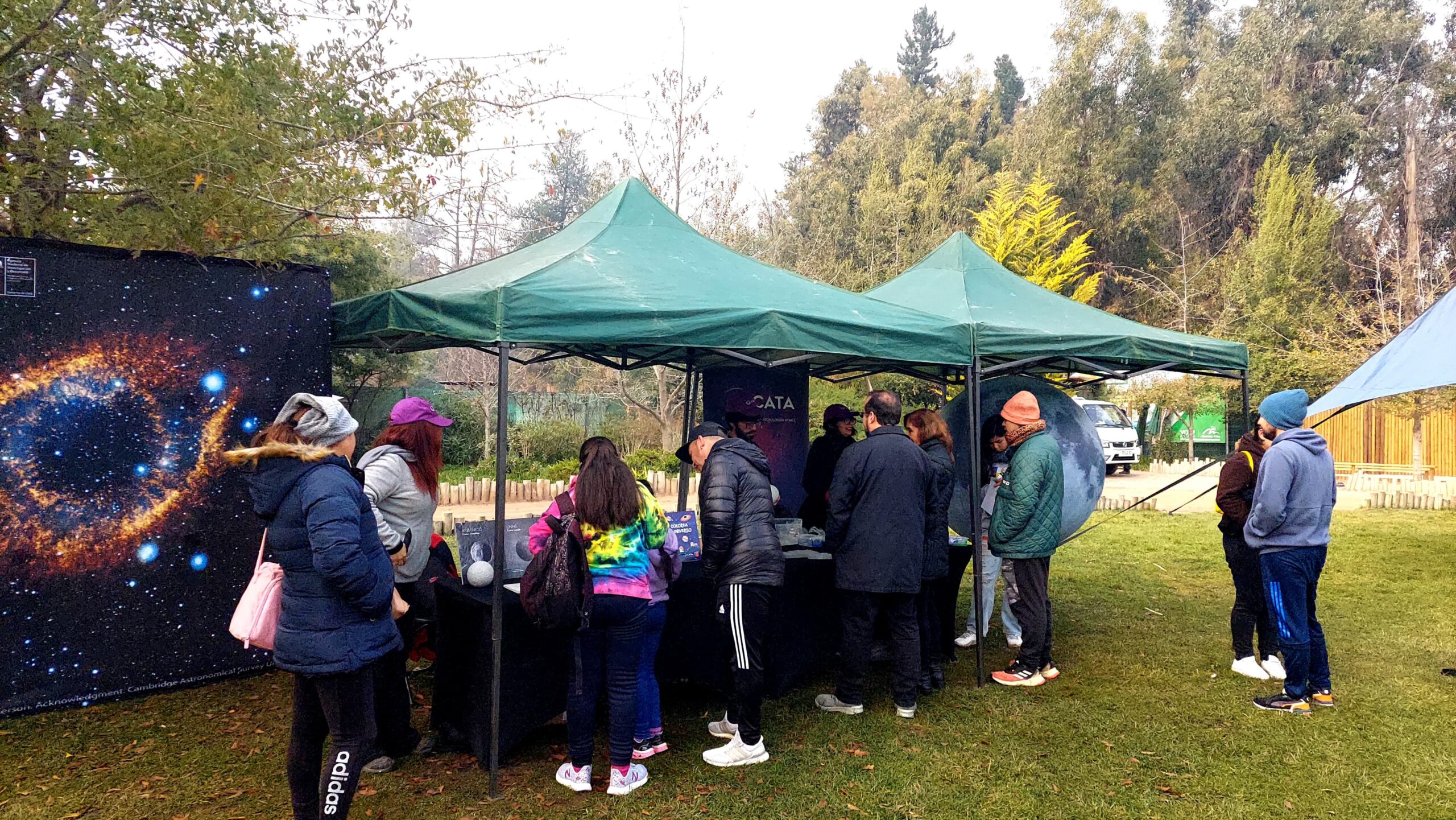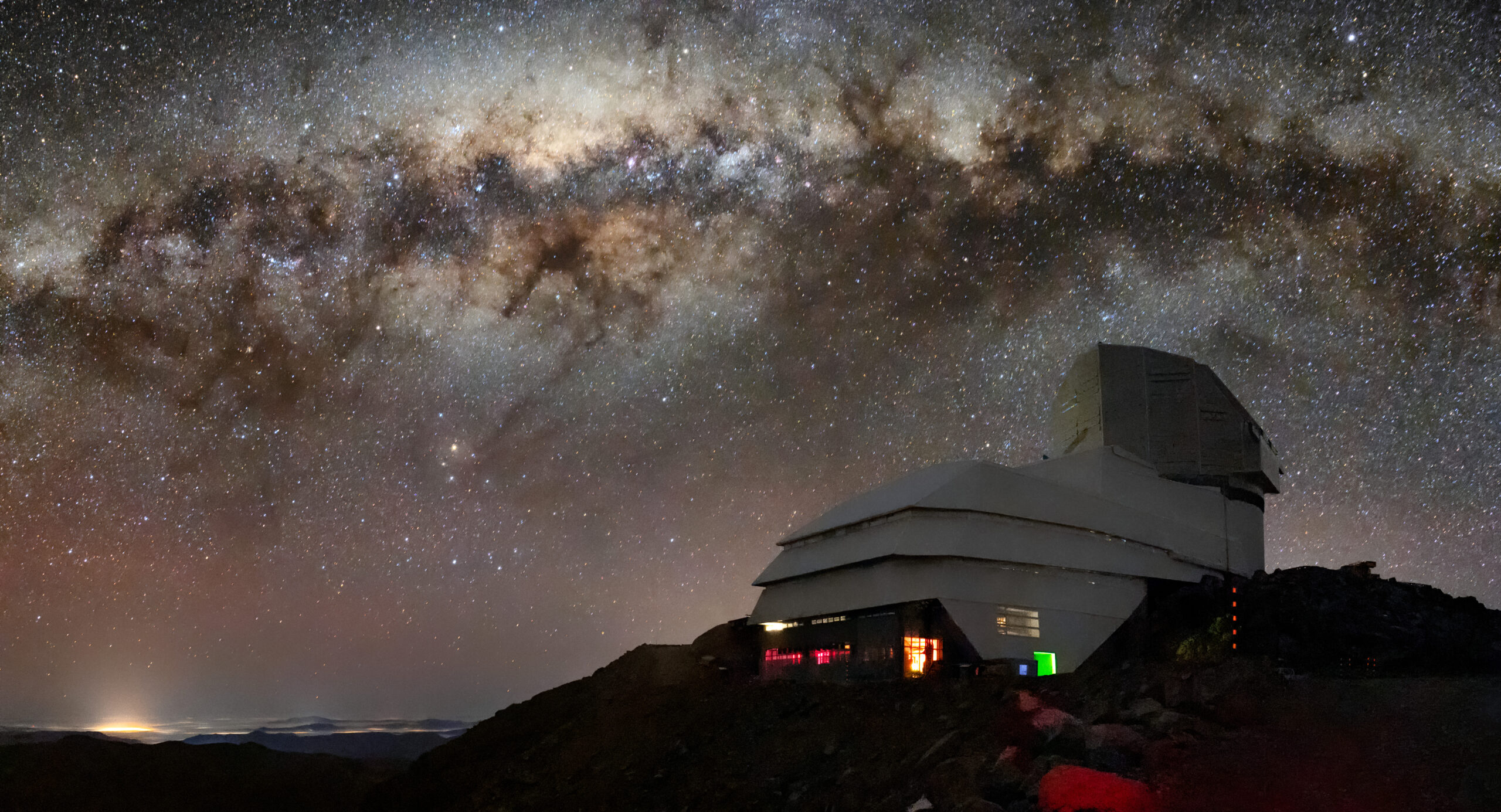
Team led by CATA researcher receives award from Chile’s Institute of Engineers
The project “Design and Construction of the ALMA Band 1 Optical Receiving System” was awarded the “Ramón Salas Edwards” prize by this prestigious institution. This initiative of high technological development was headed by CATA Associate Researcher Ricardo Finger and also included the participation of Center members Leonardo Bronfman (Principal Investigator) and José Pizarro.
The ALMA Band 1 construction project is a milestone in Chilean engineering, since it was the first time that a Chilean institution participated in the design and construction of an instrument, in this case optics, for a large observatory such as those operating in the north of our country.
This great achievement was highlighted by the Chilean Institute of Engineering with the “Ramón Salas Edwards” award, which is given to the engineer or engineers who have done outstanding work in applied research projects, in the development and/or design of a new product or process, or in the materialization of an innovation in the productive sector.
The team was headed by Ricardo Finger, Associate Researcher of the Center for Astrophysics and Related Technologies (CATA), who highlights the role of the Center in the realization of the project, since it coincides with the first stage of the basal fund that allowed its birth.
“CATA is the one that essentially provides the budget to be able to initiate a research and technological development process that requires large-scale and long-term resources. Founding a laboratory, buying very complex equipment and supporting its operation. This could not have been achieved without CATA’s contribution”.
Other outstanding researchers participated in the ALMA 1 project, including CATA members Leonardo Bronfman (Principal Investigator) and José Pizarro (mechanical engineer). The implementation process of this Optical Receiving System initiative was carried out between 2008 and 2020.
“This award is one of the most prestigious in national engineering and fills us with pride. In addition, there is a much broader recognition of what is classic engineering, to say the least, of those who built bridges and hydroelectric power plants. It is highlighting high-tech developments, which is what we are trying to move forward in the country,” says the doctor in Astronomical Instrumentation and leader of the Millimeter Wave Laboratory, who also works in the Department of Astronomy of the University of Chile (DAS).
A breakthrough for astronomy
Band 1 is characterized by its focus on lower frequencies, which makes it possible to observe the cooler universe, such as molecular clouds, gas and dust at low temperatures, as well as complex molecules emitting at lower wavelengths. This makes it possible to study the early stages of star and planetary formation, as well as complex chemical processes.
The design and development of these technological components are already part of each of the 66 antennas at the ALMA observatory.
The team is already working on a second stage, with the construction of the Band 2 lenses (a new ultra-high bandwidth receiver), which is the last one to be installed. A prototype has been completed and is already being tested, which would allow the installation of 80 lenses for all the telescope’s antennas in that spectrum.
“This shows that in Chile it is possible to contribute with high technology to international scientific projects. It means that we can be more than users of the large telescopes that our country hosts, to become co-developers. I am very optimistic in believing that we could inaugurate a new stage in which Chile is also part of the design and construction of them and CATA can play a fundamental role in this” adds Ricardo Finger, Associate Researcher of the Center.
The presentation of the “Ramón Salas Edwards” award will take place on October 24, at the premises of the Chilean Institute of Engineers.
Recent news
-
 Publicado el: 09/07/2025Patricia Tissera is recognized as full professor by the Pontificia Universidad Católica de Chile
Publicado el: 09/07/2025Patricia Tissera is recognized as full professor by the Pontificia Universidad Católica de Chile -
 Publicado el: 04/07/2025CATA researchers among the best in Chile according to international ranking Research.com
Publicado el: 04/07/2025CATA researchers among the best in Chile according to international ranking Research.com -
 Publicado el: 30/06/2025CATA Director strengthens ties in her second institutional tour
Publicado el: 30/06/2025CATA Director strengthens ties in her second institutional tour -
 Publicado el: 30/06/2025CATA celebrated Asteroid Day 2025 at the Pueblito de Las Vizcachas Park
Publicado el: 30/06/2025CATA celebrated Asteroid Day 2025 at the Pueblito de Las Vizcachas Park -
 Publicado el: 26/06/2025Vera C. Rubin: the telescope that watches the sky and anticipates the future of astronomy
Publicado el: 26/06/2025Vera C. Rubin: the telescope that watches the sky and anticipates the future of astronomy
Categories list
- Acknowledgments 20
- Astrobiology 5
- AstroCluster 1
- Black holes 13
- Corporativo 49
- Cosmology 4
- Descubrimientos 19
- Disclosure 46
- Exoplanets 13
- Extension 4
- Galaxies 17
- Galaxies formation 2
- Inter y Transdisciplina 2
- Local Universe 13
- Publications 5
- Sin categorizar 31
- Solar System 11
- Stellar formation 6
- Technology 9
- Technology Transfer 12


